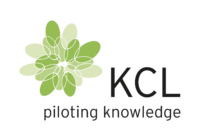What is microfibrillated cellulose?
Microfibrillated cellulose (MFC) is a type of nanocellulose derived from plant-based materials. It consists of cellulose fibres that have been broken down into micro-sized fibrils, which are significantly smaller than the fibres found in traditional cellulose. This unique structure gives MFC its remarkable properties, making it a valuable additive in various industries, including paper production.
At KCL, we have extensive experience in nanocellulose materials, and our MFC is meticulously designed to meet the requirements of diverse applications. Our MFC is produced from industrial agro sidestreams, specifically sugar beet pulp, a by-product of the sugar industry. By removing lignin and hemicellulose, and using purely mechanical means, we create microfibrillated cellulose that is comparable to wood-based analogues. This process is energy-efficient and has a low carbon footprint.
Understanding what MFC is and how it is produced is crucial for appreciating its role in enhancing paper production. The unique properties of MFC, such as its high surface area and strong hydrogen bonding capabilities, make it an excellent additive for improving the quality and performance of paper products.
The science behind microfibrillated cellulose
The science behind microfibrillated cellulose lies in its structure and properties. MFC is composed of cellulose fibrils that are only a few nanometres in diameter but can be several micrometres in length. This high aspect ratio gives MFC a large surface area, which is essential for its functionality in paper production.
One of the key properties of MFC is its ability to form strong hydrogen bonds with other cellulose fibres. When added to paper pulp, MFC acts as a reinforcing agent, creating a network of fibrils that enhance the mechanical properties of the paper. This results in increased strength and stiffness, which are highly desirable attributes in paper products.
Additionally, the high surface area of MFC allows it to interact more effectively with other components in the paper pulp, such as fillers and additives. This interaction can improve the distribution and retention of these components, leading to better overall paper quality. The unique properties of MFC make it a powerful tool for enhancing paper production in various ways.
Benefits of using microfibrillated cellulose in paper production
There are numerous benefits to using microfibrillated cellulose in paper production. One of the most significant advantages is the improvement in the mechanical properties of the paper. By incorporating MFC into the paper pulp, manufacturers can achieve higher strength and stiffness, which can lead to substantial savings in material usage. This is because stronger paper can be produced with less raw material, reducing costs and environmental impact.
Another benefit of MFC is its ability to act as a natural binder in coating formulations. Traditional paper coatings often rely on synthetic latexes and other barrier materials, which can be expensive and environmentally harmful. MFC can replace these synthetic materials, providing a more sustainable and cost-effective alternative. This not only improves the environmental footprint of the paper production process but also enhances the performance of the final product.
Furthermore, the use of MFC can improve the printability and surface properties of paper. The high surface area and strong bonding capabilities of MFC can lead to smoother and more uniform paper surfaces, which are ideal for high-quality printing applications. This makes MFC an invaluable additive for producing premium paper products.
Applications of microfibrillated cellulose in the paper industry
Microfibrillated cellulose has a wide range of applications in the paper industry. One of the primary uses of MFC is in the production of high-strength paper products. By adding MFC to the paper pulp, manufacturers can produce paper with enhanced mechanical properties, making it suitable for applications that require high durability and strength, such as packaging materials and industrial papers.
Another important application of MFC is in paper coatings. As mentioned earlier, MFC can replace synthetic binders in coating formulations, providing a more sustainable and cost-effective solution. This makes MFC an ideal additive for producing coated papers with improved surface properties and printability. Coated papers are widely used in the printing and publishing industries, where high-quality print surfaces are essential.
Additionally, MFC can be used in speciality paper products, such as filter papers and barrier papers. The unique properties of MFC, such as its high surface area and strong bonding capabilities, make it an excellent additive for enhancing the performance of these speciality papers. This opens up new possibilities for the development of innovative paper products with advanced functionalities.
In conclusion, microfibrillated cellulose offers numerous benefits for paper production, from improving mechanical properties to providing sustainable alternatives for paper coatings. At KCL, we are committed to leveraging our expertise in nanocellulose materials to support the development of high-quality, sustainable paper products. By incorporating MFC into paper production processes, manufacturers can achieve significant improvements in product performance and sustainability.
